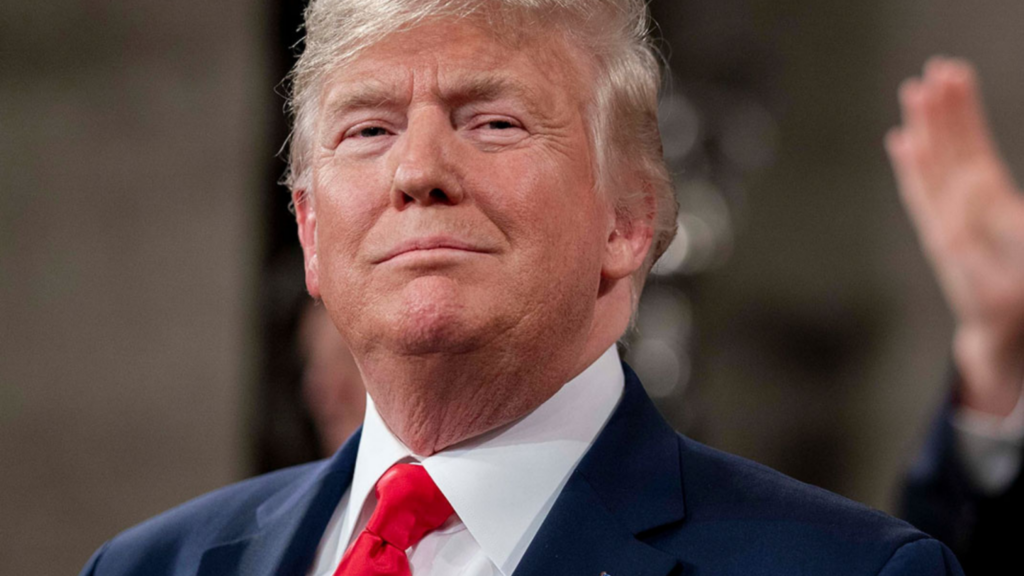The Two Faces of the US Economic Nationalism
Economic nationalism has re-emerged as a powerful force in global politics, particularly in the United States, where debates over energy and resource security are highly prominent. Traditionally understood as pure protectionism where a country shields its domestic industries from foreign competition, contemporary scholars now define 21st-century economic nationalism as a broad political-economic strategy rooted in power, security, and legitimacy (Fetzer, 2021). While elements of Donald Trump’s policies, such as tariffs and trade restrictions, could be seen as a structural response to shifting power dynamics, his ad hoc use of tariffs and disruptive trade and technology measures reflects more of a short-term populist reaction that aims to appeal to a group of people who feel that their concerns are disregarded by established elite groups (Fetzer, 2021). Consequently, Trump’s outdated approach to economic nationalism has amplified systemic political risks across global supply chains.
Traditional vs. Revisionist Economic Nationalism
In mainstream political economy, nationalism has typically been associated with the liberal framework of international political economy (IPE), most visibly through protectionist trade policies, such as trade policies and limits on foreign capital (Wendler, 2023). This traditional perspective links protectionism closely to safeguarding state security. Since the late 2000s, however, constructivist approaches in IPE have challenged this view (Wendler, 2023). Revisionist scholars argue that economic nationalism should not be reduced to a set of policies but instead understood as a set of underlying ideas, as policies often reflect material interests or crisis responses that may have little to do with nationalism (Fetzer, 2021). For example, while US steel tariffs are often interpreted as nationalist protectionism, similar measures enacted during a financial crisis may represent pragmatic crisis management rather than ideological nationalism.
Trumpism and Economic Nationalism
Economic nationalism in the United States under Donald Trump bears resemblance to earlier protectionist rhetoric. Rather than rejecting a neoliberal approach that favours free market capitalism, deregulation and reduced government spending, the US is repositioning itself as a great power rival, leveraging trade, technology, and investment restrictions to preserve its hegemony (Saliya, 2025). This is a divergence from other states and blocs, such as the European Union, which remain deeply neoliberal, promoting single markets, capital mobility, and fiscal discipline (Saliya, 2025). The EU’s Carbon Border Adjustment Mechanism (CBAM), for example, reflects a rules-based, market-oriented approach. It aims ‘to put a fair price on carbon emitted during the production of carbon-intensive goods that are entering the EU, and to encourage cleaner industrial production in non-EU countries’ (European Commission, 2025, P.1).
By contrast, Trump’s reactionary policies, including tariffs, trade wars, and anti-China rhetoric, undermined consensus on open markets and multilateralism. As Donnelly (2023, P.79) notes, ‘republicans prioritise trade wars over open, multilateral trade, especially industrial policy, to compensate for failing trade performance’. The U.S. trade deficit, growing since the 1970s due to oil and consumer imports, made such protectionist policies politically attractive (Ferreira, 2024).
Therefore, it is not surprising that Trump’s economic nationalism differs from that of a democrat such as Joe Biden. Biden’s state-led industrial policies, such as the Inflation Reduction Act (2022) and the CHIPS and Science Act (2022), are multi-year investments designed to strengthen U.S. competitiveness in semiconductors, renewable energy, and climate technology. These measures, predictable and anchored in legislation, provided investors with clear frameworks. Although Trump’s actions could be simplified to fit a republican view of the global economy, Trump’s attacks on elites and changes to national security policies are less about isolation, but more about a strategic reconfiguration of interdependence and power (Ferreira, 2024). This challenges the liberal order but is also not akin to pure protectionism. Therefore, ‘Trumpism’ could be both a temporary populist reaction and a reaction to broader power, security, and legitimacy concerns (Cambridge Dictionary, 2022, P.1). Consequently, this creates additional systemic political risks.
Populism vs. Strategy
Populism reshapes majority rule by elevating one group of people over others, typically through a leader claiming to embody ‘the real people’ (Gaufman and Ganesh, 2024). Due to this, populism can clash with constitutional democracy, even though it still uses democratic ideas and language to justify itself. As Gaufman and Ganesh (2024) argue, Trumpism actively encouraged mocking equality and taking pride in violating democratic and social norms.
This played out in US-China relations. A rivalry that might have been framed as strategic competition over trade and technology was instead infused with racialised language, fuelling anti-Asian sentiment domestically while increasing tension abroad (Skonieczny and Ancita Sherel, 2024). By late 2019, the US had imposed tariffs on roughly ‘$350 billion’ worth of Chinese imports (Figure 1), while China retaliated with tariffs on about ‘$100 billion’ in US exports (Figure 2) (Fajgelbaum & Khandelwal, 2022, P.205).
Some scholars, such as May (2024), interpret economic nationalism more strategically, as geoeconomic positioning rather than domestic populism. For instance, the India-US partnership faces new risks under Trump-style transactionalism, which emphasises short-term tariff hikes and supply chain disruption effects that Baru (2025) suggests could slow overall GDP growth. These disputes undermine alliances and global institutions, eroding trust and leaving third-party countries exposed to collateral damage even when they seek to benefit from geoeconomic tensions (Baru, 2025).
Systemic and Regulatory Risks
Populist nationalism tied to economic policy transforms trade and foreign policy into identity politics. This blending not only destabilises markets with unpredictable, grievance-driven measures but also undermines constitutional norms and alliances. Unlike geoeconomic strategies anchored in long-term planning, populist nationalism politicises supply chains, increases great-power rivalries, and normalises intolerance, creating feedback loops of instability both domestically and internationally.
For businesses and investors, the risks extend into regulatory uncertainty. US credibility as a stable partner is increasingly questioned, while global governance institutions such as the World Trade Organisation (WTO) and International Monetary Fund (IMF) struggle when populist states dismiss commitments as ‘elitist’ or ‘globalist’ (Attinasi et al., 2024). Regional blocs, like the EU and Association of Southeast Asian Nations (ASEAN), may act as stabilisers by enforcing predictable frameworks, but if they turn inward, they risk deepening fragmentation and global trade compliance (Attinasi et al., 2024).
Trump’s approach reflects a populist variant of economic nationalism that relies on ad hoc protectionism and grievance politics. While politically resonant at home, it heightens systemic risks by undermining institutional trust, destabilising alliances, and increasing market volatility (Panunzi et al., 2024). By contrast, strategic forms of economic nationalism anchored in industrial policy and long-term investment pursue competitiveness without eroding predictability (May, 2024). Distinguishing between these trajectories is critical. Future US administrations should reconcile domestic pressures with global responsibilities, a balance that will shape not only America’s credibility but also the resilience of the international political economy.
Bibliography
- Attinasi, M.G., Mancini, M., Lukas Boeckelmann, Giordano, C., Meunier, B., Panon, L., Almeida, A. de,
- Balteanu, I., Banbura, M., Bobeica, E., Borgogno, O., Borin, A., Caka, P., Campos, R.G., Carluccio, J.,
- Casola, P.D., Essers, D., Guillaume Gaulier, Rinalds Gerinovics, and Ioannou, D. (2024). Navigating a Fragmenting Global Trading System: Insights for Central Banks. SSRN Electronic Journal, [online] pp.1–77. doi:https://doi.org/10.2139/ssrn.5065237.
- Baru, S. (2025). Trade Policy and National Security: The Geoeconomic Challenge of Trumpism. Journal of the United Service Institution of India, [online] CLV(640). Available at: https://usiofindia.org/pdf/file_68872628a6cedApril-June2025-48-60.pdf [Accessed 23 Aug. 2025].
- Cambridge Dictionary (2022). Trumpism. [online] @CambridgeWords. Available at: https://dictionary.cambridge.org/dictionary/english/trumpism.
- Donnelly, S. (2023). Political party competition and varieties of US economic nationalism: trade wars, industrial policy, and EU-US relations. Journal of European Public Policy, 31(1), pp.1–25. doi:https://doi.org/10.1080/13501763.2023.2226168.
- Elizaveta Gaufman and Ganesh, B. (2024). The Trump Carnival. Walter de Gruyter GmbH & Co KG.
- European Commission (2025). Carbon Border Adjustment Mechanism. [online] European Commission. Available at: https://taxation-customs.ec.europa.eu/carbon-border-adjustment-mechanism_en.
- Fajgelbaum, P. and Khandelwal, A. (2022). The Economic Impacts of the US-China Trade War. National Bureau of Economic Research, [online] 14(29315). doi:https://doi.org/10.1146/annurev-economics-051420-110410.
- Ferreira, J. (2024). US Trade Deficit Little-Changed in June. [online] Tradingeconomics.com. Available at: https://tradingeconomics.com/united-states/balance-of-trade.
- Fetzer, T. (2021). Beyond ‘economic nationalism’: towards a new research agenda for the study of nationalism in political economy. Journal of International Relations and Development, 25. doi:https://doi.org/10.1057/s41268-021-00227-x.
- Internal Revenue Service (2022). Inflation Reduction Act of 2022 | Internal Revenue Service. [online] www.irs.gov. Available at: https://www.irs.gov/inflation-reduction-act-of-2022.
- May, C. (2024). Political Economy: Comparative, International, and Historical Perspectives. Springer Nature.
- Panunzi, F., Pavoni, N. and Tabellini, G. (2024). Economic Shocks and Populism. The Economic Journal, [online] 134(663). doi:https://doi.org/10.1093/ej/ueae042.
- Saliya, C.A. (2025). Donald Trump’s Ultra-Nationalistic Policies: An Era of ‘America First’. [online] doi:https://doi.org/10.2139/ssrn.5114764.
- Skonieczny, A. and Ancita Sherel (2024). The Trump effect: the perpetuation of populism in US–China trade. International Affairs, 100(5), pp.1959–1981.
- U.S. Congress (2022). H.R.4346 – 117th Congress (2021-2022): Supreme Court Security Funding Act of 2022. [online] www.congress.gov. Available at: https://www.congress.gov/bill/117th-congress/house-bill/4346.
- Wendler, E. (2023). The Political Economy of Friedrich List. Springer studies in the history of economic thought. Springer International Publishing. doi:https://doi.org/10.1007/978-3-031-24601-2.



